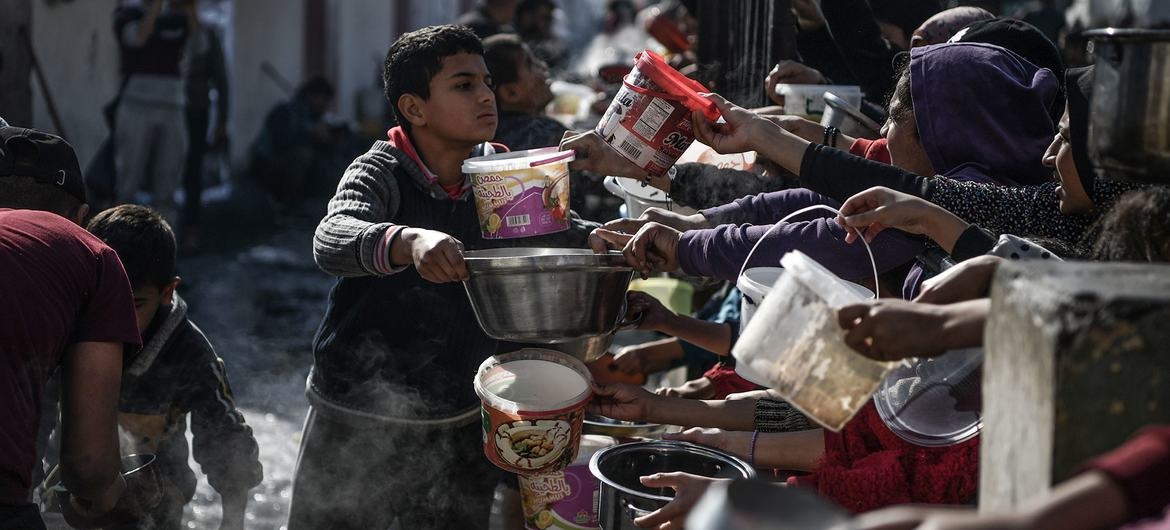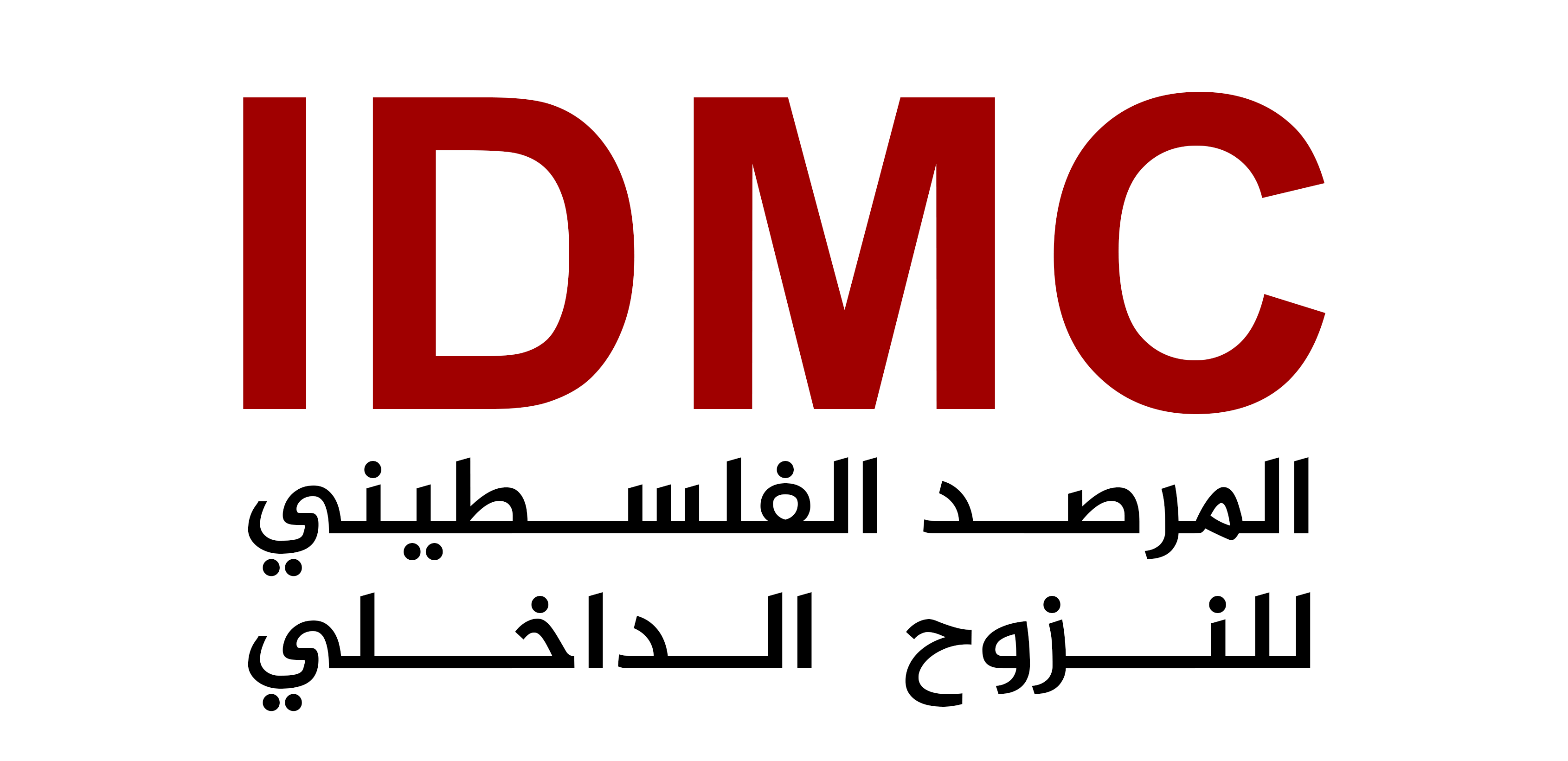
Toward a Policy to Address the Severe Lack of Food Security Amid the War on the Gaza Strip (2023–2024)
The Palestinian issue stands as one of the longest-running political and humanitarian conflicts in modern history, rooted in complex historical circumstances and a lengthy record of occupation, settlement, and blockade imposed on the Palestinian people. Over the decades, Palestinians have faced systematic violations of their fundamental rights, including forced displacement, the destruction of infrastructure, and a blockade that has severely restricted their freedom of movement and access to basic necessities.
Within this context, the war on the Gaza Strip erupted on October 7, 2023, against the backdrop of continued Palestinian suffering under occupation and the escalation of repressive measures by Israeli forces. This war emerged following decades of political frustration, the absence of just solutions for the Palestinian cause, and the ongoing suffocating blockade on Gaza—now surpassing 16 years. Consequently, the humanitarian situation in the Strip, home to more than two million Palestinians living in one of the world’s most densely populated areas, has deteriorated sharply.
With the intensification of military operations and further tightening of the siege, Gaza’s humanitarian conditions turned catastrophic: vital infrastructure was attacked, supply chains were disrupted, and humanitarian aid was prevented from reaching the population. Severe shortages of food, water, and fuel have dramatically worsened the suffering of civilians, particularly amid widespread displacement and the destruction of residential areas.
This paper aims to illuminate the dire situation in Gaza, with particular attention to the severe lack of food security, the breakdown of supply chains, and the overwhelming strain on local resources. It further seeks to propose practical strategies and recommendations to address the humanitarian crisis amid an insufficient international response, grounded in the legal and humanitarian frameworks essential for ensuring civilian protection and the safeguarding of their fundamental rights.
Main Challenges
- Shortage of Food and Safe Drinking Water Due to the Difficulty of Bringing Supplies Through Crossings
The residents of the Gaza Strip suffer from a severe shortage of food and vegetables because Israel continues to close the Rafah and Kerem Shalom crossings and prevent humanitarian aid from entering through them.
According to the Food Security Sector (FSS), the consistent and reliable supply of food to serve all residents of the Gaza Strip still faces obstacles due to repeated border closures, long-term restrictions on importing goods into the Gaza Strip, damage to vital infrastructure, and the unstable security situation.
Approximately 96% of Gaza’s population (2.1 million people) face high levels of acute food insecurity.
- Disruption of Supply Chains Due to Infrastructure Destruction and Restrictions on the Kerem Shalom Crossing
This points to the interruption or delay in the flow of essential resources and services because of the war, the restrictions on crossings, or the destruction of infrastructure. In the Gaza Strip, the blockade and the escalation of military operations since October 7, 2023, have led to a near-complete paralysis in food supply chains.
This is due to several key factors:
- The closure of vital crossings such as Kerem Shalom, which serves as the main artery for bringing in food items and essential goods.
- Stringent restrictions on the entry of goods, where humanitarian supplies and food items are either held up or allowed in very limited quantities, insufficient to meet the needs of the population.
- Destruction of infrastructure, including roads, warehouses, and transport networks, impeding distribution of supplies even when they do arrive.
- Military and economic pressures that limit the ability of local farmers and manufacturers to produce or distribute food locally.
As a result, there is a severe shortage of basic food items and unprecedented price hikes, making them unaffordable for most people, with food insecurity escalating—especially for displaced families and the most vulnerable groups. Local distribution networks are collapsing due to depleted stockpiles and the disruption of transportation systems.
- Heightened Pressure on Local Resources, Rendering the Gaza Strip Unable to Provide for the Population’s Needs
This refers to the overreliance on available resources within the Strip to meet the population’s basic needs, in light of the interruption of external supplies due to the siege and the war. This situation is compounded by the increasing demand for food, water, and basic services due to the blockade, internal displacement, and population growth.
This stems from a set of causes, including:
- The closure of crossings and prevention of food and fuel from entering force residents to rely entirely on local resources, which are insufficient to meet demand.
- Military operations have led to large-scale internal displacement, increasing the demand for scarce resources such as food, water, and healthcare services.
- Destruction of agricultural lands and infrastructure due to bombing, and the absence of agricultural inputs such as seeds and fertilizers, have caused a decline in local food production.
- With consumption on the rise because of the crisis, local resources are unable to meet the population’s needs, leading to their rapid depletion (high consumption amidst limited resources).
This is followed by a substantial rise in prices, making food inaccessible to the poorest segments of society, and by weak infrastructure in Gaza that makes it difficult to meet the growing demand for water and energy. The strain on medical resources and health services further deteriorates the conditions of patients and the injured.
The increased pressure on local resources in the Gaza Strip worsens the humanitarian situation and calls for an immediate response to support the population and relieve the burden on the damaged infrastructure.
- Insufficient International Response to Meet Urgent Food Needs
Despite the gravity of the disaster befalling the civilian population since October 7, 2023—encompassing a severe siege, a genocidal war, and acute shortages of food and aid—an urgent and coordinated intervention is required. Yet, the international response so far has been limited and disproportionate to the scale of the catastrophe.
Indicators of the slow diplomatic and humanitarian response include:
- The absence of genuine international pressure to open the crossings and allow entry of food and medical aid into Gaza.
- Inadequate humanitarian funding from donor countries to meet the basic needs of the population, hindering the ability of humanitarian organizations to provide immediate food and aid.
- The disregard by many countries and international institutions to take a firm stand against ongoing violations of international humanitarian law, allowing the perpetuation of the blockade and the prevention of aid delivery.
- The absence of lasting solutions, with a focus on temporary responses rather than comprehensive and long-term measures to address the root causes of the crisis.
Several reasons underlie these shortcomings:
- Political Priorities: The responses of many countries are influenced by political considerations that may hinder taking clear positions or effective measures.
- Lack of International Coordination: The absence of effective coordination among countries and humanitarian organizations to offer a unified and rapid response to the crisis.
- Humanitarian Fatigue: Other global crises have reduced attention to the situation in the Gaza Strip, weakening the response.
Consequently, the humanitarian situation in the Gaza Strip continues to deteriorate, casualties are increasing, and residents are suffering. Food insecurity and shortages of medical supplies are growing, leading to higher rates of malnutrition and mortality. The crisis lingers, lacking effective international intervention to impose mechanisms ensuring aid deliveries and an end to the blockade.
The Legal and Political Framework of the Humanitarian Crisis in the Gaza Strip
- International Humanitarian Law (IHL)
International Humanitarian Law, which includes the four Geneva Conventions of 1949 and their Additional Protocols, regulates the conduct of parties in armed conflicts and aims to protect civilians and guarantee access to humanitarian relief.
Relevant Provisions:
- Article 23 of the Fourth Geneva Convention: Requires parties to allow the passage of humanitarian supplies, including food, medicine, and relief materials, to civilian populations without hindrance.
- Article 59 of the Fourth Geneva Convention: Obligates belligerent parties to permit and facilitate relief operations in occupied territories if these territories suffer from a severe shortage of essential supplies.
- Article 70 of the First Additional Protocol (1977): Stipulates that parties must ensure the free passage of humanitarian relief and must not obstruct its delivery to affected civilians.
Violations in the Gaza Strip:
- The blockade imposed on the Strip for many years constitutes collective punishment, which is prohibited under Article 33 of the Fourth Geneva Convention.
- Preventing the delivery of aid, especially through the Kerem Shalom Crossing, blatantly violates these provisions, rendering such actions tantamount to war crimes under Article 8 of the Rome Statute of the International Criminal Court.
- International Human Rights Law (IHRL)
Alongside the rules governing armed conflicts, human rights remain applicable during wartime. These fundamental rights include:
- The Right to Food: Enshrined in the International Covenant on Economic, Social and Cultural Rights (ICESCR), which in Article 11 affirms every person’s right to adequate food. Preventing the entry of food through the crossings and imposing stringent controls on local supply chains constitute a clear violation of this right.
- The Right to Life: Under Article 6 of the International Covenant on Civil and Political Rights (ICCPR), states must ensure the protection of civilians’ right to life, which is undermined by continued bombardment, the blockade, and deprivation of essential needs.
- Relevant United Nations Resolutions
- UN Security Council Resolution 1860 (2009): Calls for the opening of crossings for humanitarian aid without restrictions, emphasizing the importance of meeting humanitarian needs in Gaza.[3]
- UN General Assembly Resolution 2535 (1969): Provides for the protection of Palestinian rights, including the right to humanitarian relief.[4]
- UN General Assembly Resolution 64/10: Stresses the importance of respecting international humanitarian law and ensuring the delivery of aid to populations under siege.[5]
Shortcomings: The failure to implement these resolutions due to the lack of binding mechanisms has led to the continuation of violations of civilian rights in Gaza.
- The Rome Statute of the International Criminal Court
- Article 7: Indicates that systematic acts such as a blockade leading to starvation could be classified as crimes against humanity.
- Article 8: Criminalizes the use of starvation as a method of warfare, including the prevention of access to essential supplies for civilians.
Legal Consequences: Those responsible for preventing aid or imposing the blockade can be tried at the international level for committing war crimes and crimes against humanity.
- Responsibilities of Third States Under International Law
- The Principle of International Cooperation: Under Common Article 1 of the Geneva Conventions, High Contracting Parties must ensure respect for the Conventions in all circumstances, meaning third states are obliged to pressure Israel to lift the blockade and ensure the entry of aid.
- Prohibition of Assistance or Recognition of Violations: Under the Draft Articles on Responsibility of States for Internationally Wrongful Acts by the International Law Commission, states are prohibited from offering any support or assistance that perpetuates the blockade or obstructs aid.
- Customary International Law
Even in the absence of binding international treaties, customary law sets forth principles prohibiting the use of starvation as a weapon, obligating all parties to secure essential needs for affected populations. Under Rule 55 of the Customary International Humanitarian Law by the International Committee of the Red Cross (ICRC), the passage of humanitarian relief must be allowed, and hindering such passage constitutes a grave breach.
- Moral and Humanitarian Responsibility
Beyond the legal framework, there is a moral obligation on the international community to save civilians from the humanitarian catastrophe in Gaza. International institutions such as the UN, the World Food Programme, and the World Health Organization bear both legal and moral responsibilities to take immediate measures to deliver necessary supplies.
In conclusion, international law—whether pertaining to armed conflicts or human rights—provides a clear framework obliging all parties to open crossings and ensure the flow of food and medical supplies into Gaza. The continued blockade and obstruction of aid constitute grave violations of international law, demanding a more decisive international response to safeguard civilians and end the ongoing humanitarian disaster.
Current Laws and Policies
Under International Humanitarian Law, providing food and basic assistance to civilians in conflict zones is a fundamental humanitarian right. However, the absence of effective enforcement mechanisms to compel responsible parties to deliver aid to residents of the Gaza Strip makes this right unenforceable.
Legal Gaps
Although some international resolutions call for allowing aid to enter, there remains a lack of effective legal measures ensuring that aid reaches Gaza’s residents under siege. This necessitates immediate international intervention to ensure the implementation of these laws and the protection of civilians.
Political Objectives
Main Objective
To secure a regular and sustainable supply of food for the residents of the Gaza Strip, guaranteeing their basic needs are met despite the siege and military escalation.
Subsidiary Objectives
- Improve Access to Humanitarian Aid: Ensure the passage of food and medical supplies through crossings.
- Support Flexible Local Distribution Strategies: Provide food security during emergency conditions and strengthen local capacity.
- Collaborate with International Partners: Coordinate efforts among humanitarian actors and implement prompt interventions.
Proposed Strategies
- Ensuring the Arrival of Humanitarian Supplies Through Crossings
- Description: Exert pressure on responsible parties to permanently open the Kerem Shalom Crossing and establish safe corridors to guarantee the regular entry of food and medical supplies.
- Implementation: Call for the intervention of the United Nations and humanitarian organizations to oversee the crossings, ensuring that aid is allowed in regularly.
- Expanding Food Assistance Programs for the Population
- Description: Develop urgent food distribution programs to meet the basic needs of the most affected communities.
- Implementation: Provide emergency funding to humanitarian organizations operating in Gaza to expand food assistance programs in coordination with local authorities.
- Supporting Local Food Production and Resilience
- Description: Enhance Gaza’s capacity to provide part of its food needs by supporting local farmers and promoting urban agriculture projects.
- Implementation: Offer technical and financial aid to farmers to develop sustainable farming, and create local distribution networks for agricultural produce.
- Strengthening International and Regional Cooperation
- Description: Activate cooperation between regional and international organizations to ensure continuity of food supplies and support local initiatives.
- Implementation: Engage donors and international organizations in planning and implementing urgent programs to maintain a steady food supply.
Recommendations
- Immediate and Continuous Opening of Crossings: Provide safe corridors for the entry of food and medical supplies into the Gaza Strip in coordination with the United Nations.
- Support Local Production: Deliver urgent assistance to farmers and fishermen to bolster local food production.
- Swift Entry of External Supplies: Alleviate the burden on local resources and ensure basic needs are met.
- Coordinate Humanitarian Efforts: Collaborate with international organizations to support the population amid limited resources.
- Increase Emergency Funding: Allocate additional funding to humanitarian programs in Gaza to meet urgent food requirements.
- Support Agricultural Infrastructure: Implement sustainable agricultural projects to reinforce local production and reduce dependence on external supplies.
- Establish an International Legal Framework: Ensure the continuous flow of aid to affected areas in times of conflict.
Conclusion
The situation in the Gaza Strip requires urgent international intervention to prevent a wider-scale humanitarian catastrophe, as residents endure a strict and comprehensive blockade that deprives them of their most basic human rights. An immediate global response is essential to halt this unprecedented humanitarian disaster—one that violates all international covenants and agreements—and to guarantee the delivery of food supplies. Effective cooperation between humanitarian actors and international bodies is crucial to maintaining sustainable food security in the Gaza Strip. Protecting civilian lives and dignity is a responsibility shared by the international community and demands concerted efforts from all concerned parties.

Alaa Ramzi Ibrahim Dawood
Human rights activist, advocating for vulnerable groups in society, striving for knowledge and learning.
 English
English

